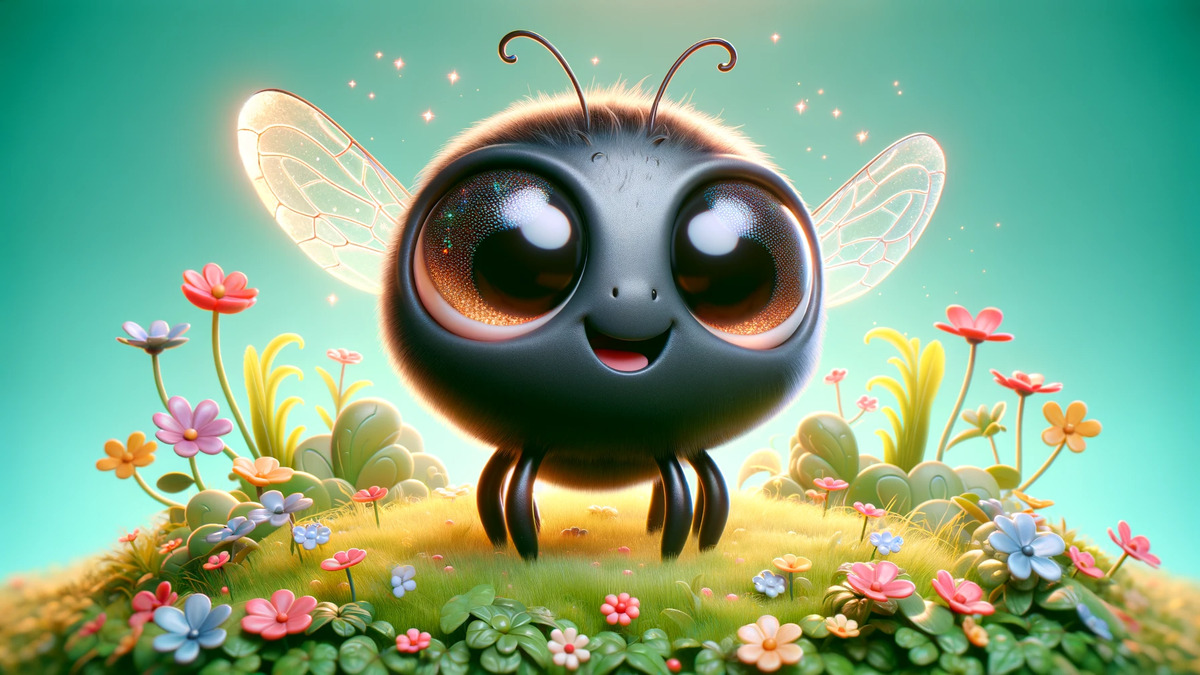A fly belonging to the fly family. They have a pair of wings, unique in the insect world. The hind wings have then evolved into an organ of equilibrium, which gives them incredible agility in flight.
Diverse diet. Some species feed on decaying organic matter, such as the well-known housefly, while others are predators, parasites or blood-suckers.
Although often regarded as pests, some species of course play an important role in the ecosystem.
They have specialised organs on the tips of their six legs. They can sense taste and smell. In other words, each limb has a tongue and a nose. (Somewhat scary…).
Flies, like other insects, undergo complete metamorphosis, changing from egg to larva, pupa and adult. Remarkable examples of evolutionary adaptation are found in desert-dwelling flies.
Males of some species are known to use elaborate courtship behaviour, such as aerial acrobatics and gift-giving, to attract females.
To control the populations of harmful fly species, scientists have turned to genetic engineering, creating genetically modified male flies that leave non-viable offspring, in a method known as sterile insect technology.
More than 120,000 species of flies have been officially described, testifying to their enormous biodiversity and adaptation to almost every habitat on the planet.
Special abilities of various flies From flies that work for people to flies that are terrifying
Drosophila, the humble fruit fly, has made a significant contribution to our understanding of genetics and developmental biology, and has become a darling of scientific research due to its short life cycle and easy culture methods.
Clogmia is known for its larval filter-feeding behaviour, building complex webs to capture food particles in the water.
Tsetse flies are blood-sucking flies. It carries the parasite responsible for the African sleeping sickness that is devastating throughout sub-Saharan Africa.
You might think that a zebra’s stripes would stand out in the jungle, but those stripes are thought to be more of a defence against the tsetse fly than camouflage to blend in with the landscape. It has been observed that tsetse flies instinctively tend not to be attracted to their black and white stripes.
Black flies in particular have proved essential in forensic investigations, helping to estimate time of death by examining the life cycle stages present in decomposing bodies.
Bot flies have a gruesome reproductive strategy, parasitising mammals and depositing their eggs under the skin of the host.
The range in size of the fly species is astonishing. The smallest species is only 0.4 mm long, while the largest, Gauromydus helos, can reach 70 mm. Some flies, such as hoverflies, mimic the appearance of stinging insects such as bees and wasps as a defence mechanism, illustrating the complexity of their evolutionary tactics.
Interesting studies have shown that male fruit flies rejected by females tend to consume more alcohol, indicating that the reward system in the fly brain is more complex than we thought. Finally, the fly’s eye is composed of thousands of lenses, allowing it to quickly detect movement and changes in light intensity.
Females of the parasitic fly, Philornis downsi, lay eggs in the nests of songbirds, and the larvae parasitise the chicks, with a significant negative impact on bird populations.
In the field of bioremediation, black soldier fly larvae are used to compost organic waste and their voracious feeding helps to effectively break down and reduce waste.
A group of flies known as drain flies or sewer flies have hairs covering their bodies that act as sensory organs, helping them to move through normally dark and humid environments.
Certain species of mayfly, a small fly species, are used for biological control and their larvae prey on a variety of destructive pests, benefiting agriculture.
In contrast, species such as the Mediterranean fruit fly are considered important agricultural pests, causing extensive damage to fruit crops.
Surprisingly, some flies, such as the parasitic larvae of the blue-green tit, are able to manipulate the behaviour of their host ants and induce them to provide protection and resources.



コメント